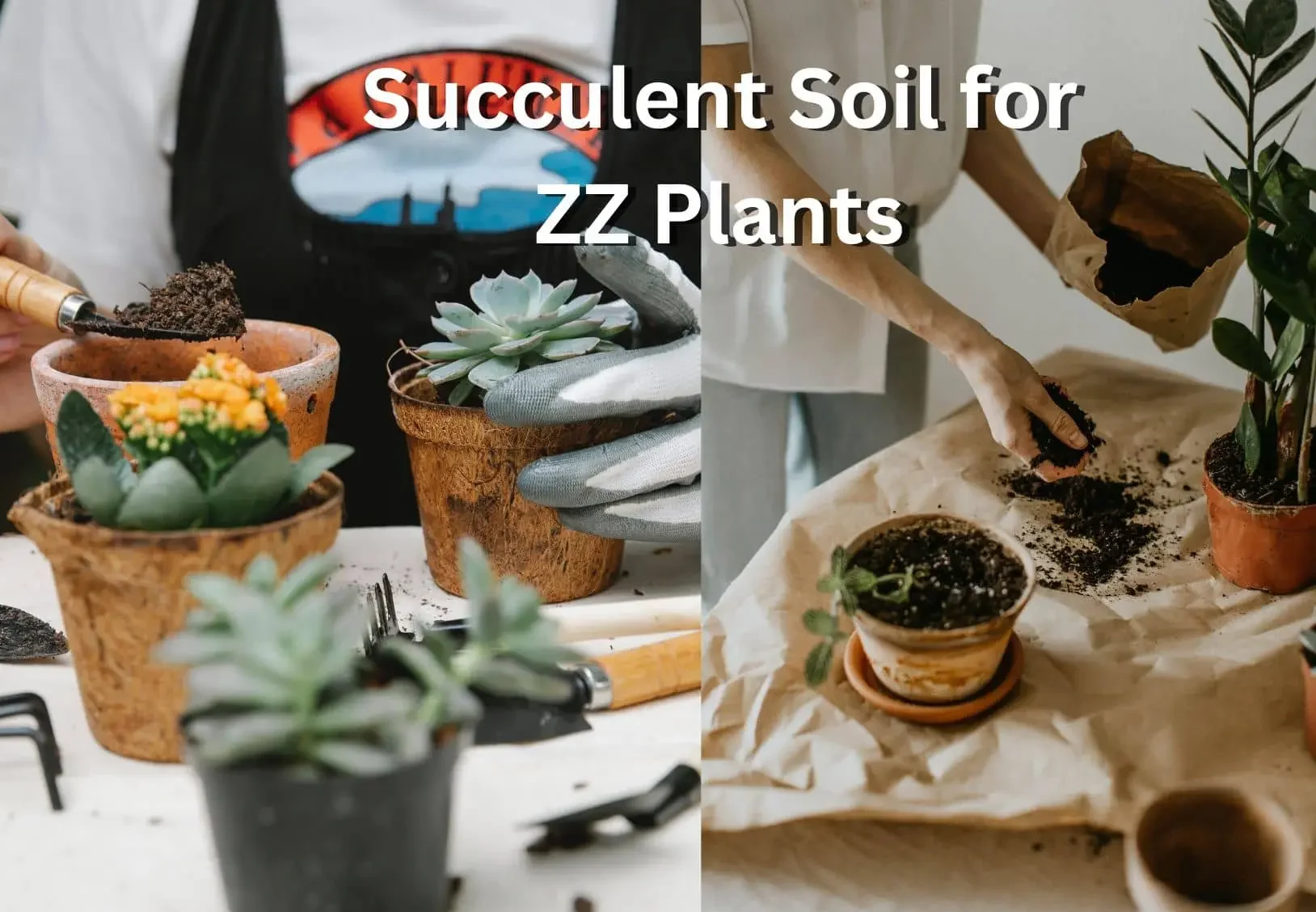When it comes to caring for houseplants, providing the right soil is crucial for their overall health and well-being.
The ZZ plant (Zamioculcas zamiifolia) has gained popularity in recent years due to its resilient nature and ability to thrive in various conditions.
However, a common question that arises among plant enthusiasts is whether succulent soil is suitable for ZZ plants.
In this comprehensive guide, we will explore the characteristics of ZZ plants, the importance of soil selection, and ultimately answer the question: Can I use succulent soil for ZZ plant?
Understanding ZZ Plants
Native to Eastern Africa, the ZZ plant is a member of the Araceae family and is characterized by its attractive glossy, dark green foliage.
This plant has gained popularity as a houseplant due to its tolerance for low light conditions, minimal watering requirements, and ability to withstand neglect.
The ZZ plant’s ability to store water in its rhizomes allows it to survive in arid environments, making it a suitable candidate for those seeking low-maintenance plants.
The Significance of Soil for ZZ Plants
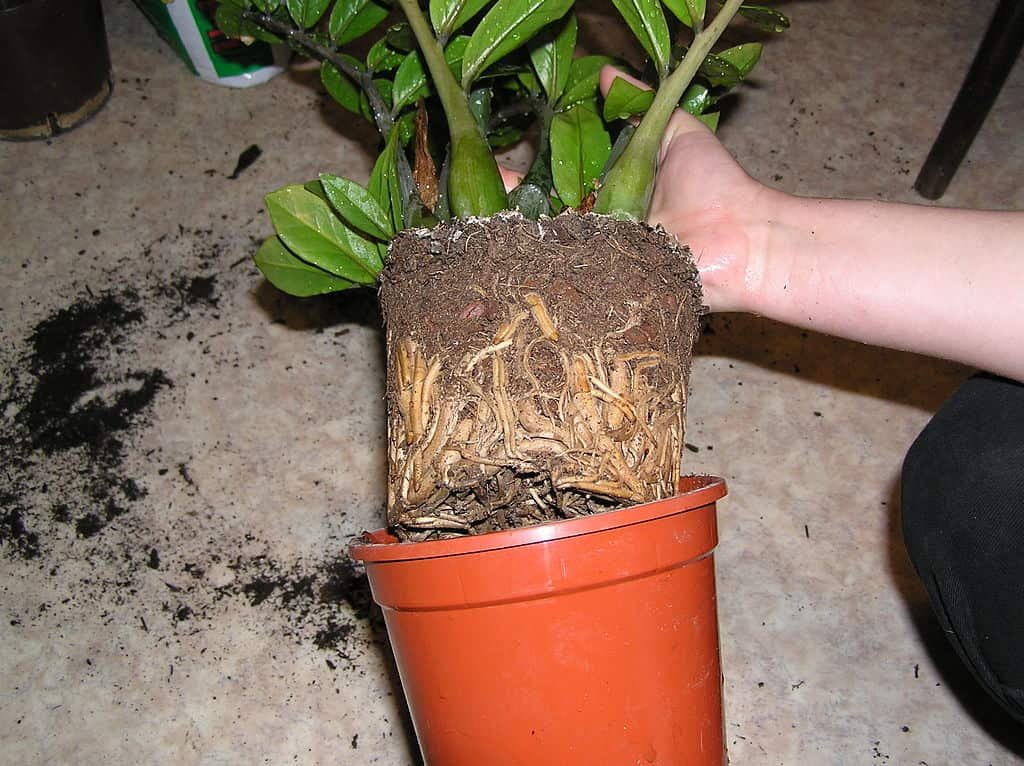
Selecting the right soil is vital for the success of any plant, including ZZ plants.
Soil plays a crucial role in providing nutrients, oxygen, and water to the roots, which are essential for healthy growth and development.
The right soil should provide proper drainage, prevent waterlogging, and allow roots to access oxygen.
Additionally, it should contain the necessary nutrients to support the plant’s overall health.
Characteristics of Succulent Soil
Succulent soil is specifically formulated to meet the unique needs of succulent plants, which are adapted to arid environments.
Succulent soil typically consists of a well-draining mixture that allows excess water to escape quickly, preventing root rot and other moisture-related issues.
It often contains a combination of materials such as perlite, coarse sand, and organic matter to create a lightweight and porous medium.
The purpose of succulent soil is to mimic the natural environment of succulent plants, providing the ideal conditions for their growth and preventing waterlogged roots.
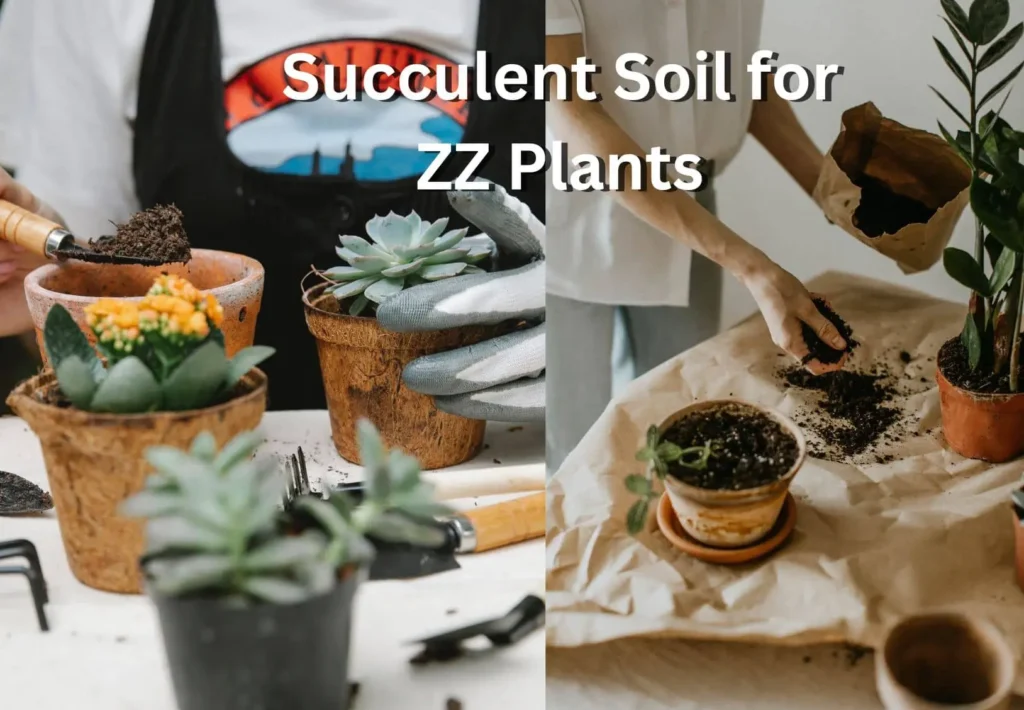
Can I Use Succulent Soil for ZZ Plants?
Yes, you can use succulent soil for a ZZ plant. Succulent soil is designed to drain quickly, which is important for ZZ plants, as they are susceptible to root rot if their soil is too wet.
You can also add perlite or pumice to regular potting soil to improve drainage.
Benefits of Using Succulent Soil
While ZZ plants do not require soil as gritty as traditional succulents, succulent soil can still be an excellent option. Here’s why:
- Adequate Drainage: ZZ plants prefer soil that drains well to prevent waterlogging. Succulent soil provides the necessary drainage to avoid excessive moisture retention, reducing the risk of root rot and other related issues.
- Moisture Regulation: Succulent soil helps regulate moisture levels effectively, preventing overwatering, which can be detrimental to ZZ plants. The porous nature of succulent soil allows water to evaporate more quickly, ensuring that the ZZ plant’s rhizomes are not constantly submerged.
- Nutrient Availability: While ZZ plants are known for their ability to tolerate low-nutrient conditions, providing them with a nutrient-rich soil can help promote optimal growth. Succulent soil often contains organic matter and trace elements that contribute to overall plant health.
- Ease of Maintenance: Using succulent soil for your ZZ plants can simplify your maintenance routine. The well-draining nature of succulent soil reduces the likelihood of overwatering, making it easier to strike the right balance between watering and allowing the soil to dry out.
Drawbacks of using succulent soil for ZZ plants
While using succulent soil for ZZ plants can be beneficial in many ways, there are a few drawbacks to consider:
- Nutrient Availability: Succulent soil is generally low in nutrients, as it is designed for plants that thrive in low-nutrient environments. ZZ plants, on the other hand, can benefit from occasional feeding with a balanced fertilizer. Succulent soil may not provide enough nutrients to support optimal growth and overall health in the long term. Supplementing with fertilizers or periodically repotting with fresh soil can help address this issue.
- Moisture Retention: Succulent soil is designed to promote quick drainage and prevent waterlogging. While this is beneficial for succulents, ZZ plants have a moderate tolerance for moisture and can benefit from slightly higher soil moisture levels. Succulent soil, with its excellent drainage properties, may dry out too quickly for ZZ plants, leading to more frequent watering requirements.
- Watering Adjustments: ZZ plants prefer to dry out partially between waterings. Succulent soil, which dries out quickly, may require more frequent watering compared to other types of soil mixes. This can be a potential drawback for those seeking low-maintenance plants, as it may require more attention to ensure proper hydration.
- Soil Texture: Succulent soil is typically gritty and coarse to facilitate drainage. This texture may not be visually appealing to some plant enthusiasts who prefer a finer-textured soil mix. ZZ plants in succulent soil may have a different aesthetic appearance compared to those planted in regular potting soil.
- Availability and Cost: Succulent soil may not be as readily available as regular potting soil in all regions. Finding a good quality succulent soil mix can be challenging, especially if there are limited options or high costs involved. This can be a drawback for plant owners who prefer easy accessibility to suitable soil mixes.
It’s important to weigh these drawbacks against the benefits of using succulent soil for ZZ plants.
Depending on your specific preferences, environmental conditions, and availability of materials, you can decide whether succulent soil is the best choice for your ZZ plants or if an alternative soil mix may be more suitable.
Regular monitoring of your plants’ moisture needs and occasional nutrient supplementation can help mitigate some of the drawbacks associated with using succulent soil.
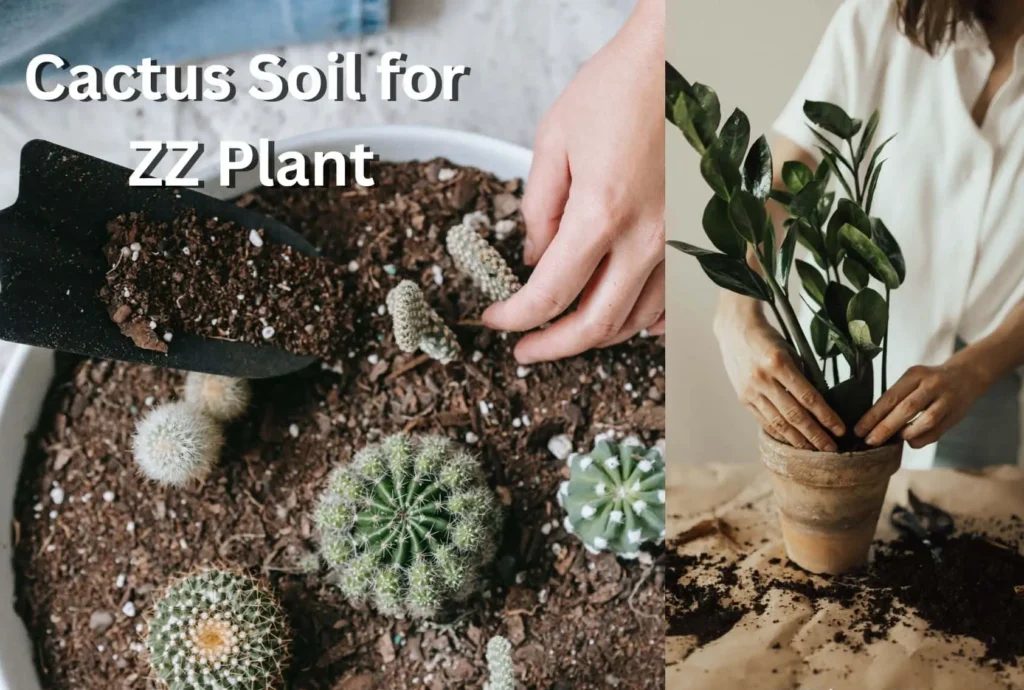
Also, read about: Can I Use Cactus Soil for ZZ Plant? A Complete Guide.
Preparing Succulent Soil for ZZ Plants
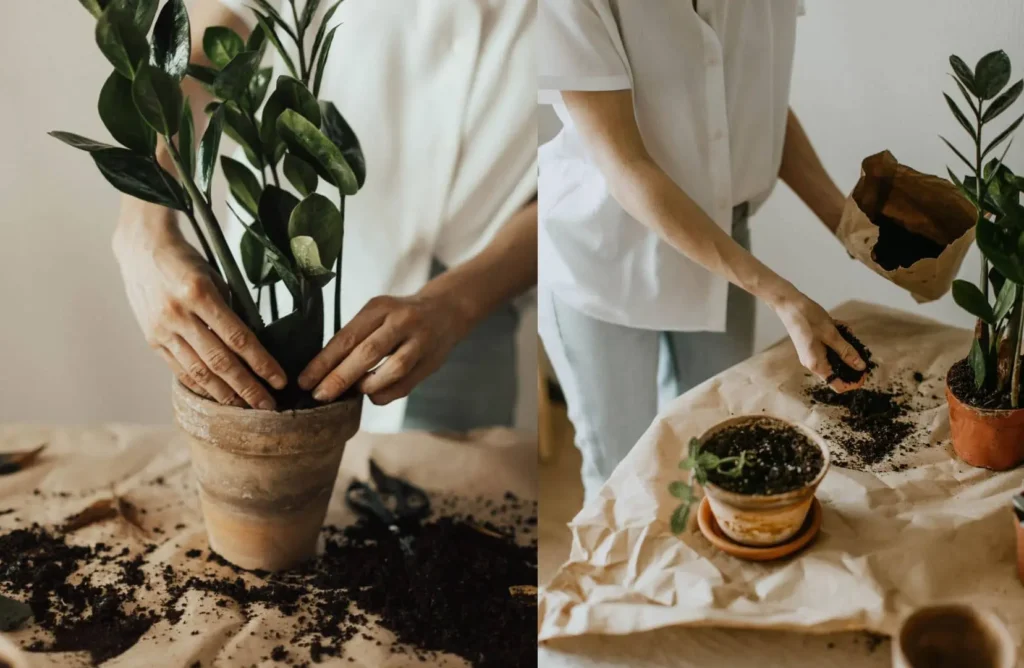
If you decide to use succulent soil for your ZZ plants, you can either purchase pre-made succulent soil from nurseries or make your own mixture.
Here’s a simple recipe to create your own succulent soil:
Ingredients:
- 1 part regular potting soil
- 1 part perlite or pumice
- 1 part coarse sand
Instructions:
- In a large container, mix the potting soil, perlite or pumice, and coarse sand in equal parts.
- Thoroughly blend the ingredients together until well combined.
- Ensure that the mixture is evenly moist but not overly saturated.
- Your homemade succulent soil is now ready to use for your ZZ plants.
Related FAQs:
While regular potting soil can be used for ZZ plants, it is not the ideal choice. Regular potting soil tends to retain moisture for longer periods, which can lead to overwatering and root rot in ZZ plants. If you choose to use regular potting soil, it’s important to ensure good drainage by adding materials like perlite or pumice to the mix.
Yes, you can mix succulent soil with regular potting soil to create a well-draining blend suitable for ZZ plants. By combining the two types of soil, you can achieve a balance between moisture retention and drainage. Aim for a mixture that allows excess water to escape quickly, preventing waterlogged roots.
The watering frequency for ZZ plants depends on various factors such as the size of the pot, environmental conditions, and the moisture level of the soil. It’s best to allow the soil to dry out partially between waterings. Check the moisture level by inserting your finger into the soil up to an inch. If it feels dry at that depth, it’s time to water. Overwatering should be avoided, as it can lead to root rot. Adjust your watering schedule based on the specific needs of your ZZ plant.
Succulent soil is specifically formulated for plants that require excellent drainage, such as succulents and cacti. While it can be used for some other houseplants that prefer drier conditions, it may not be suitable for plants that require higher moisture levels or have different soil preferences. It’s best to research the specific soil requirements of each plant before making a decision.
To improve the drainage of regular potting soil for ZZ plants, you can add materials like perlite, pumice, or coarse sand. These ingredients help create air pockets in the soil, allowing excess water to drain more efficiently. Mix in a ratio of one part drainage material to three parts regular potting soil to enhance drainage while still retaining some moisture.
While succulent soil is an excellent option for ZZ plants, there are alternative soil mixes that can work well too. Some people use a mixture of regular potting soil, perlite, and orchid bark to create a well-draining blend. The key is to ensure that the soil provides good drainage while retaining some moisture to support the ZZ plant’s water storage abilities.
Succulent soil is well-draining and will dry out quickly, which is important for ZZ plants. ZZ plants are drought-tolerant and do not like to sit in water, so succulent soil helps to prevent root rot.
Succulent soil may not contain enough nutrients for ZZ plants, so you may need to fertilize your plant more often. Additionally, succulent soil may be too coarse for some ZZ plants, so you may need to add some peat moss or other organic matter to the soil to improve its texture.
The best way to use succulent soil for ZZ plants is to mix it with a regular potting soil in a 1:1 ratio. This will help to ensure that your plant has enough nutrients and drainage.
You should water your ZZ plant when the soil is dry to the touch. Water thoroughly until water runs out of the drainage holes in the pot. Allow the soil to dry out completely before watering again.
Conclusion
In conclusion, while ZZ plants are not succulents, using succulent soil can be a suitable option for their growth and overall well-being.
Succulent soil provides the necessary drainage and moisture regulation that ZZ plants require, reducing the risk of overwatering and root rot.
Additionally, succulent soil can offer nutrient availability and ease of maintenance, simplifying the care routine for ZZ plant owners.
Whether you choose to purchase pre-made succulent soil or make your own mixture, ensuring proper soil selection is a crucial step in cultivating healthy and thriving ZZ plants.
Remember, while succulent soil is beneficial for ZZ plants, it’s also essential to consider other factors such as adequate light, temperature, and regular monitoring of watering needs.
By providing the right conditions, you can enjoy the beauty and resilience of ZZ plants as they bring a touch of nature into your indoor space.

